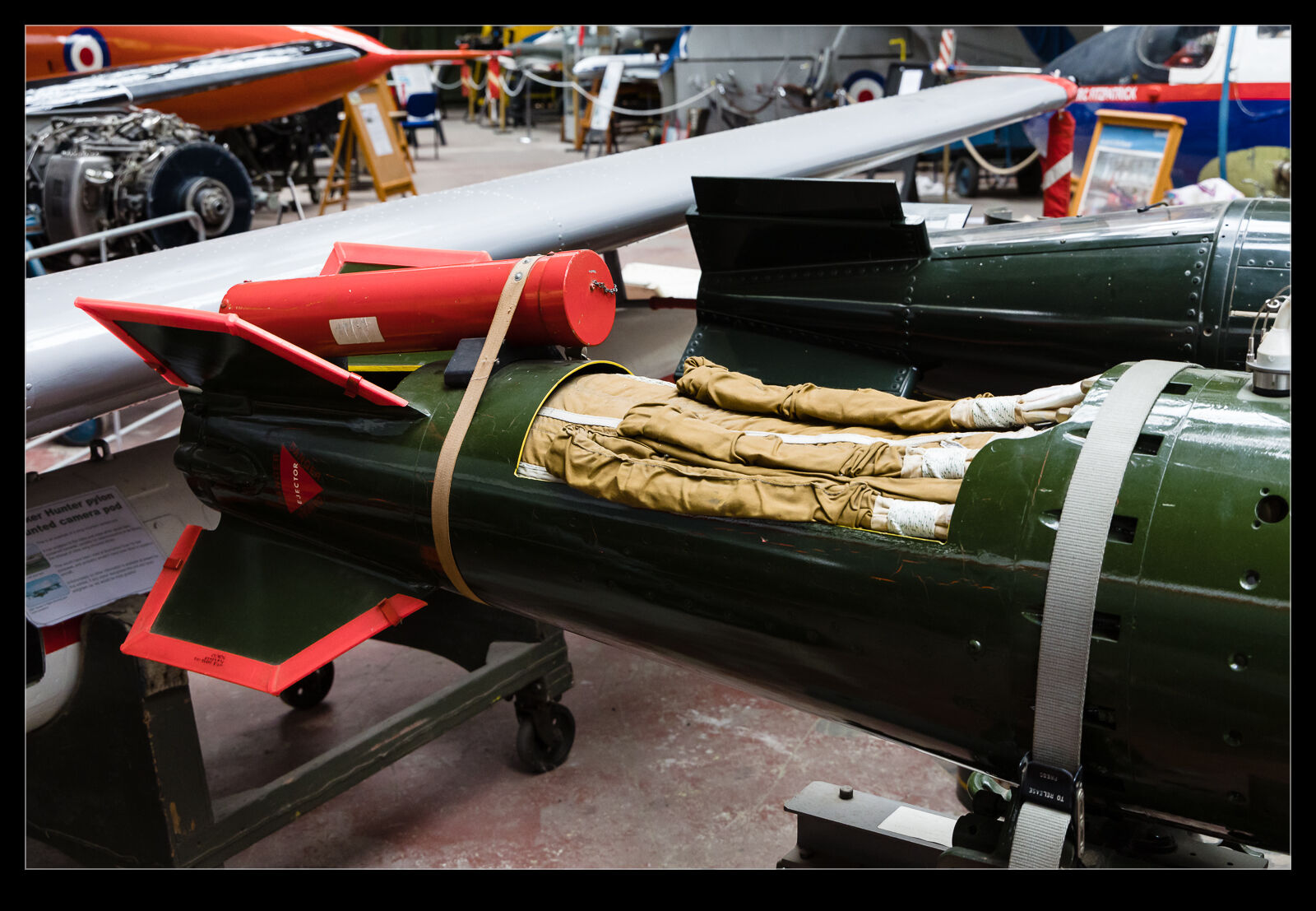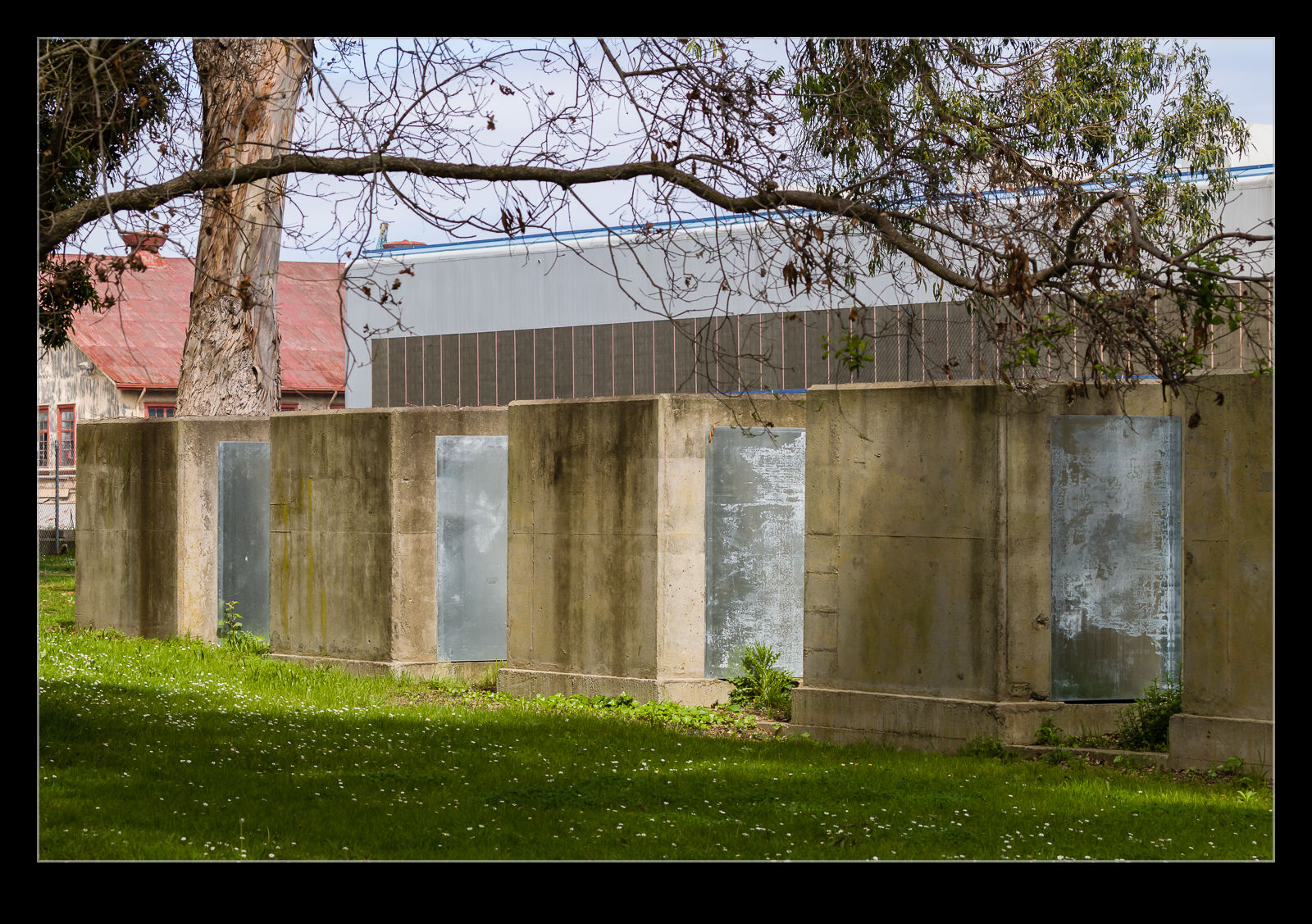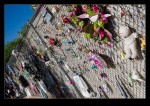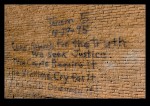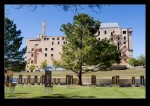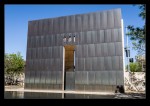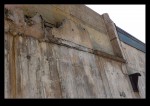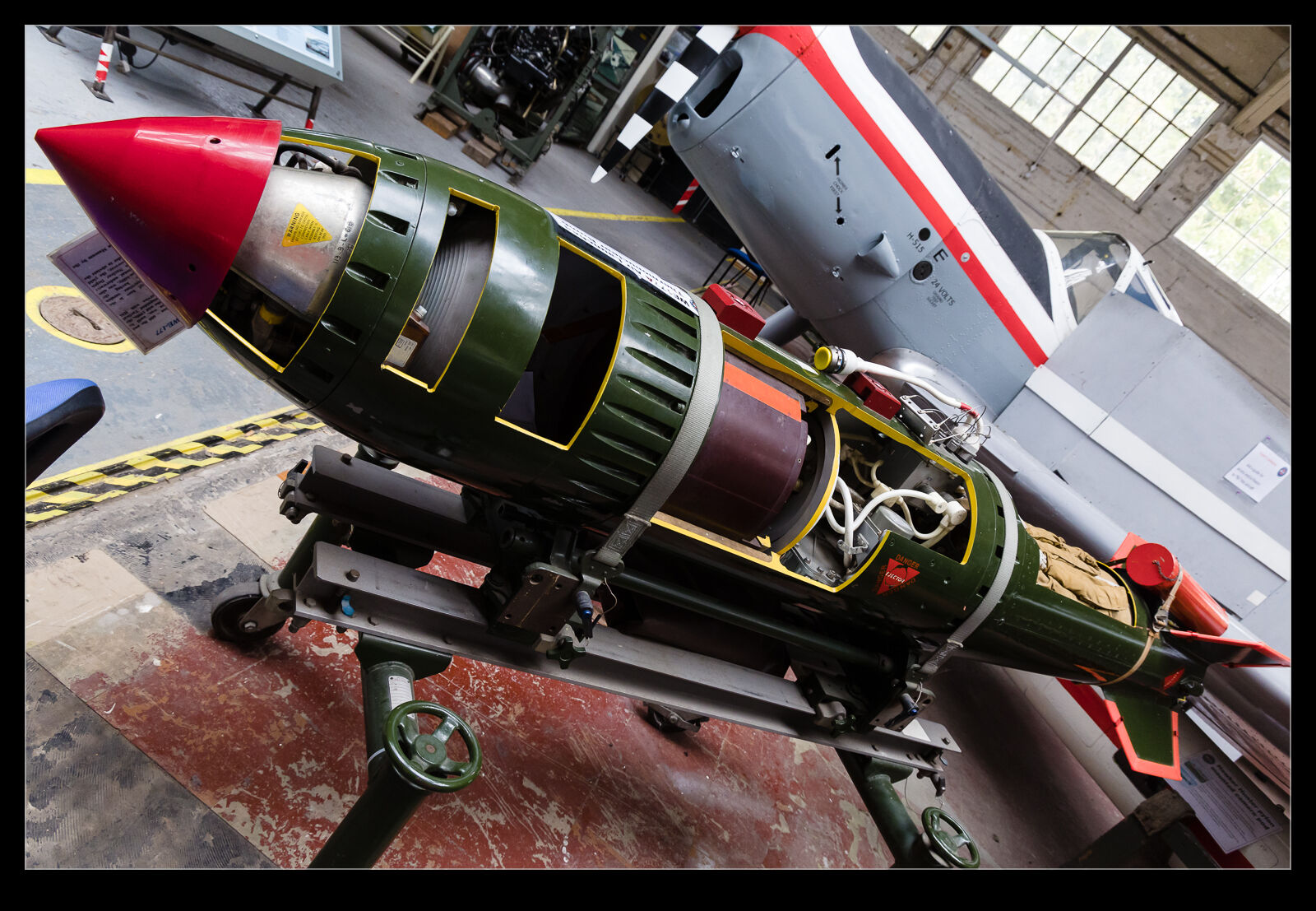 Many moons ago, I was walking around the RAF Museum at Cosford when I was taken aback to see a “special weapon” on display. I didn’t realize that they had been declassified so, to see an inert one on display was rather a shock. Now they crop up all over the place. The Boscombe Down Aviation Collection at Old Sarum has one on display. It has been cut open to reveal the various elements of what turns a small amount of metal into a large amount of energy! Amazing to think so much destruction can be done wrought with so little!
Many moons ago, I was walking around the RAF Museum at Cosford when I was taken aback to see a “special weapon” on display. I didn’t realize that they had been declassified so, to see an inert one on display was rather a shock. Now they crop up all over the place. The Boscombe Down Aviation Collection at Old Sarum has one on display. It has been cut open to reveal the various elements of what turns a small amount of metal into a large amount of energy! Amazing to think so much destruction can be done wrought with so little!
Tag Archives: bomb
Bomb Shelters(?)
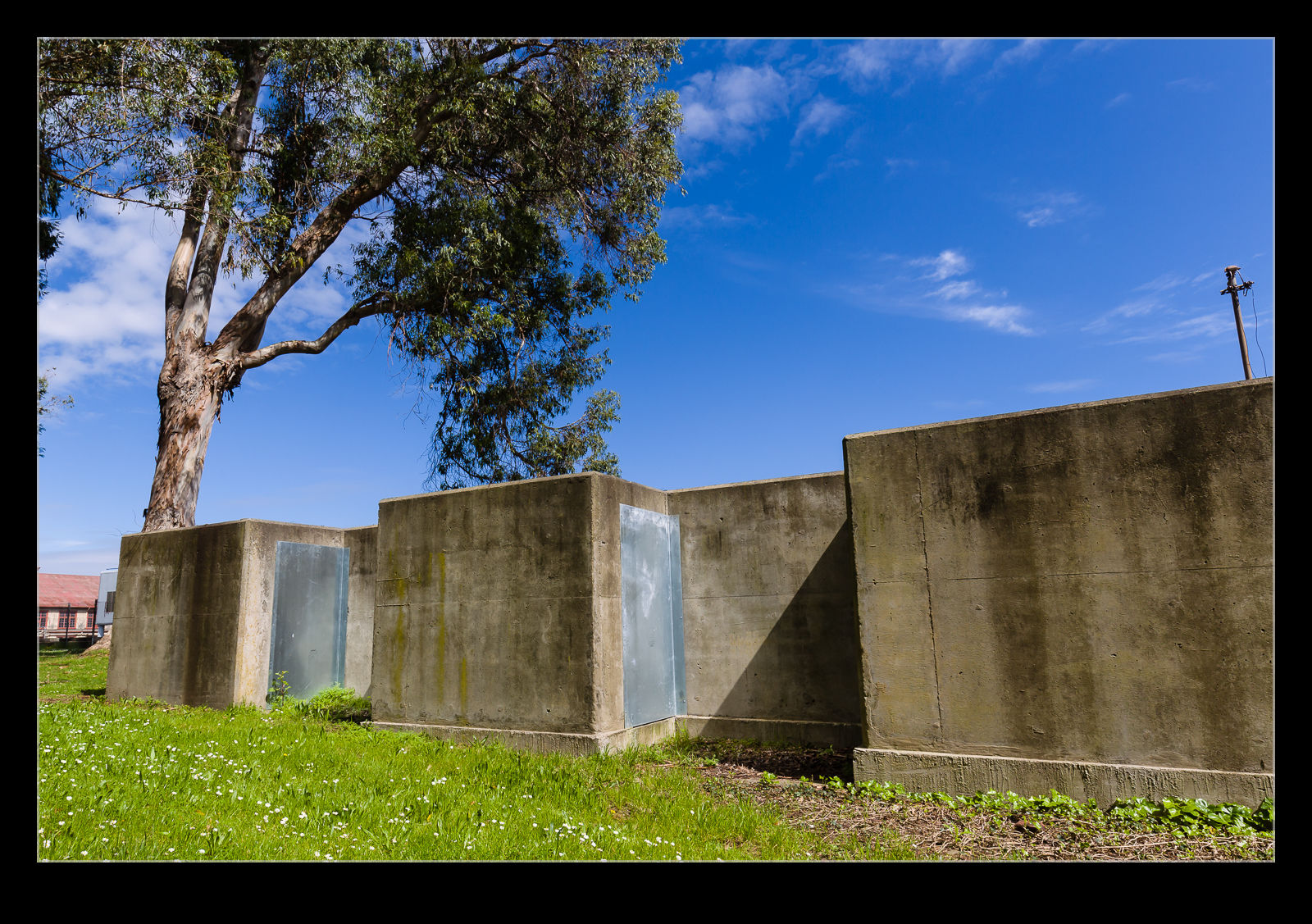 With the outbreak of the Second World War, Mare Island rapidly added some bomb shelters for the workers and residents. These concrete bunkers were built quickly but have lasted a long time. The doors to them have gradually decayed and they are now predominantly sealed with steel doors. As bomb shelters go, they were of reasonable use. A direct hit would have destroyed them and whoever was unlucky enough to be inside. However, they should have provided protection to the occupants from shrapnel resulting from a nearby impact had it ever happened. Now they just look a little incongruous amongst the trees but there would have been a time when they were considered a very welcome feature to those nearby.
With the outbreak of the Second World War, Mare Island rapidly added some bomb shelters for the workers and residents. These concrete bunkers were built quickly but have lasted a long time. The doors to them have gradually decayed and they are now predominantly sealed with steel doors. As bomb shelters go, they were of reasonable use. A direct hit would have destroyed them and whoever was unlucky enough to be inside. However, they should have provided protection to the occupants from shrapnel resulting from a nearby impact had it ever happened. Now they just look a little incongruous amongst the trees but there would have been a time when they were considered a very welcome feature to those nearby.
Special Weapons at Cosford
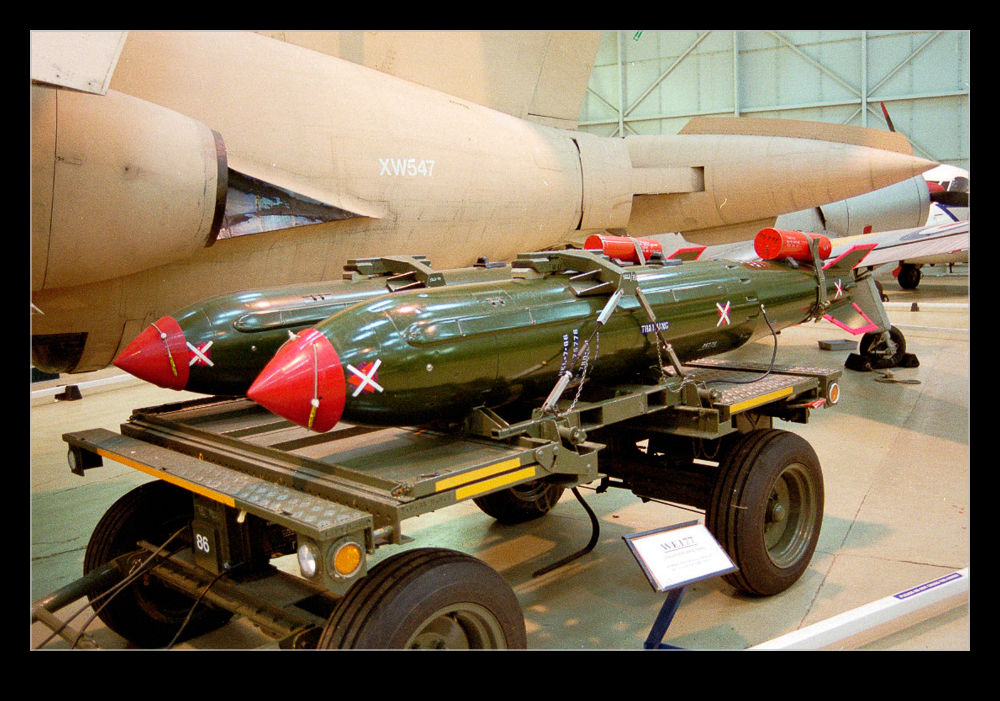 I have twice been able to visit the museum at RAF Cosford outside Telford in the UK. On my second visit, I had a very surprising experience. I was looking at a Buccaneer that was on display in one of the hangars. As I walked around it, I saw something that I had not expected to see. They were some bombs but not normal bombs. When I worked on Tornado many years ago, some of the handling clearances we wrote were for what were euphemistically called special weapons. Even the outline of these stores was highly classified and anything we did that included clearances for them had a higher security rating than normal weapons. I never saw one for real. Only the drawings showing the shapes were available. Once I finished working on them, I figured I wouldn’t see them again.
I have twice been able to visit the museum at RAF Cosford outside Telford in the UK. On my second visit, I had a very surprising experience. I was looking at a Buccaneer that was on display in one of the hangars. As I walked around it, I saw something that I had not expected to see. They were some bombs but not normal bombs. When I worked on Tornado many years ago, some of the handling clearances we wrote were for what were euphemistically called special weapons. Even the outline of these stores was highly classified and anything we did that included clearances for them had a higher security rating than normal weapons. I never saw one for real. Only the drawings showing the shapes were available. Once I finished working on them, I figured I wouldn’t see them again.
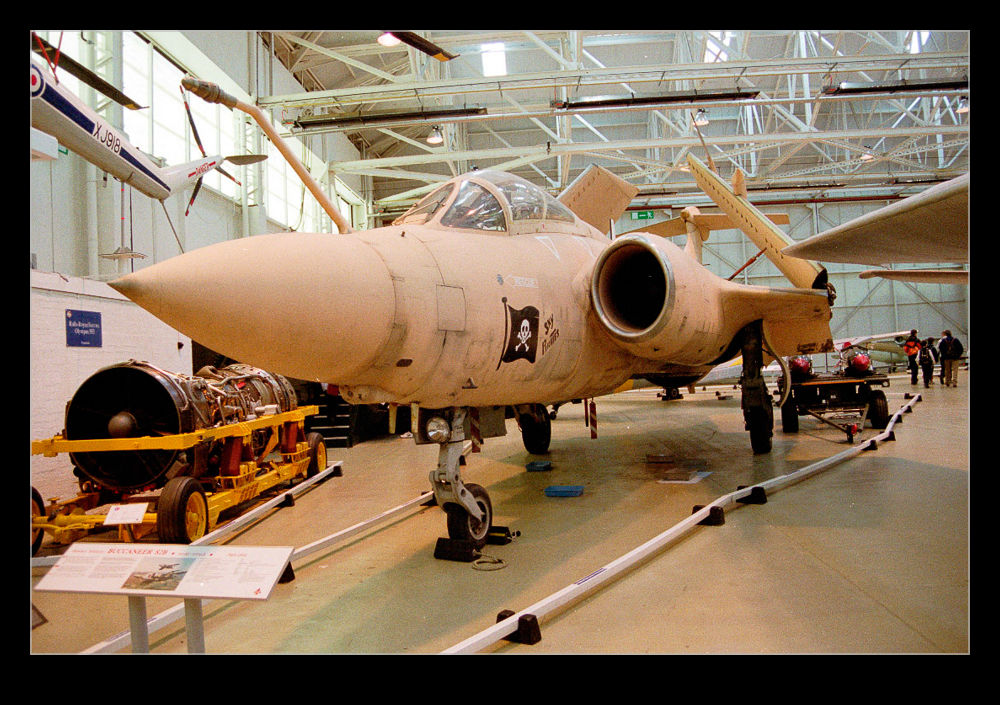 Turns out I was wrong. The RAF retired their weapons as part of an overall strategic weapons reform and, once they were withdrawn from service, the classification was downgraded. This included allowing the weapon shapes to be declassified so they could be put on display in a museum. When I first saw them, I thought that someone must have made a big mistake but it turns out that everything was above board. I doubt many people walking past them were even aware of what they were and they certainly won’t have been as surprised as I was.
Turns out I was wrong. The RAF retired their weapons as part of an overall strategic weapons reform and, once they were withdrawn from service, the classification was downgraded. This included allowing the weapon shapes to be declassified so they could be put on display in a museum. When I first saw them, I thought that someone must have made a big mistake but it turns out that everything was above board. I doubt many people walking past them were even aware of what they were and they certainly won’t have been as surprised as I was.
Oklahoma City Bombing Memorial
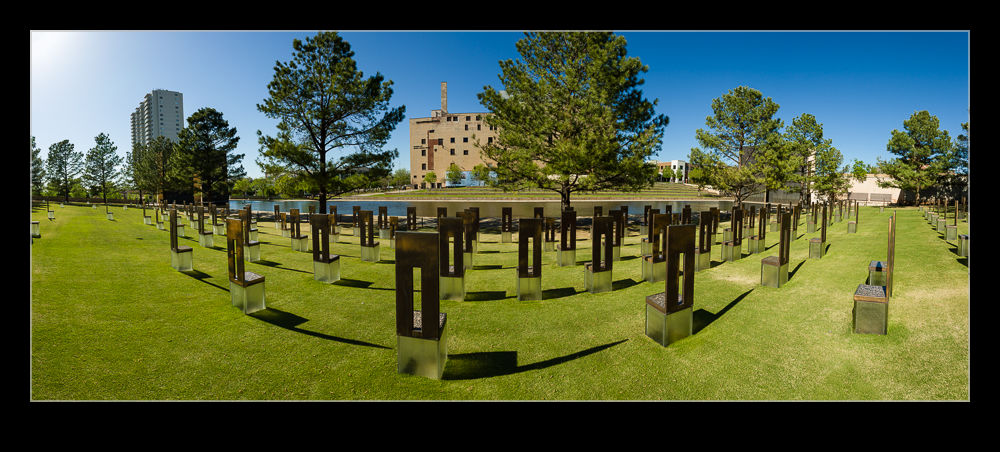 Work recently took me to Oklahoma City. I had been there on another work visit a few years ago and that time I visited the site of the federal building bombing. It was a moving place and this time I wanted to go back and take my camera with me. At the end of a day of meetings, I headed across.
Work recently took me to Oklahoma City. I had been there on another work visit a few years ago and that time I visited the site of the federal building bombing. It was a moving place and this time I wanted to go back and take my camera with me. At the end of a day of meetings, I headed across.
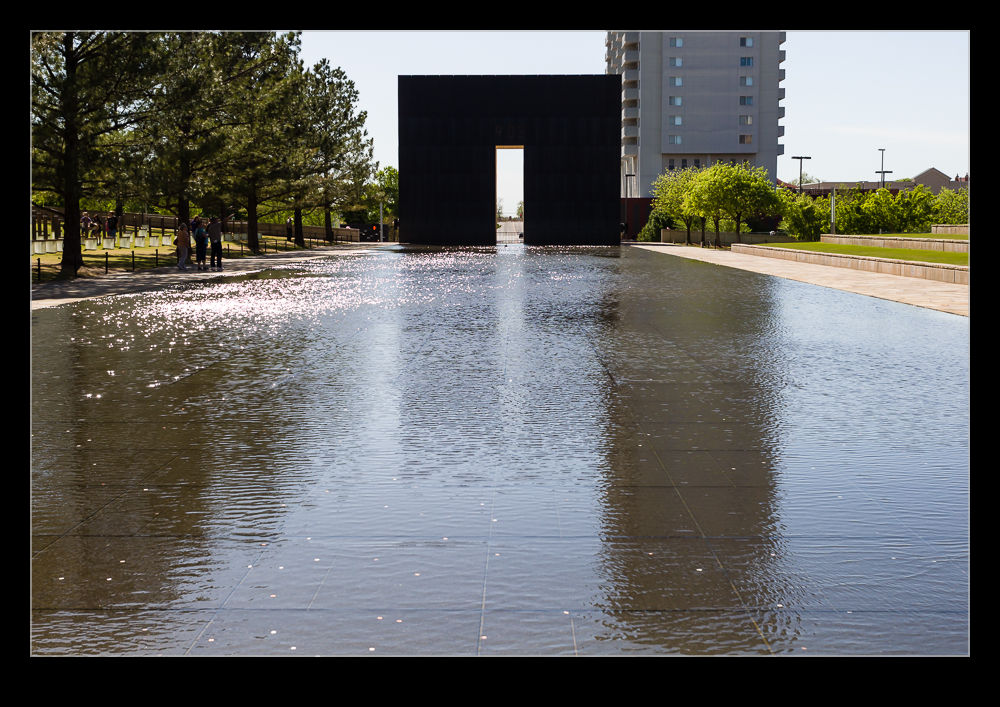 The location is slightly odd in that it is in the heart of the city and has a steady stream of visitors but it doesn’t feel busy. I parked on the street across from the entrance and wandered around freely rarely crossing paths with others. There was even a school group there but they didn’t seem intrusive. The memorial has a few key elements.
The location is slightly odd in that it is in the heart of the city and has a steady stream of visitors but it doesn’t feel busy. I parked on the street across from the entrance and wandered around freely rarely crossing paths with others. There was even a school group there but they didn’t seem intrusive. The memorial has a few key elements.
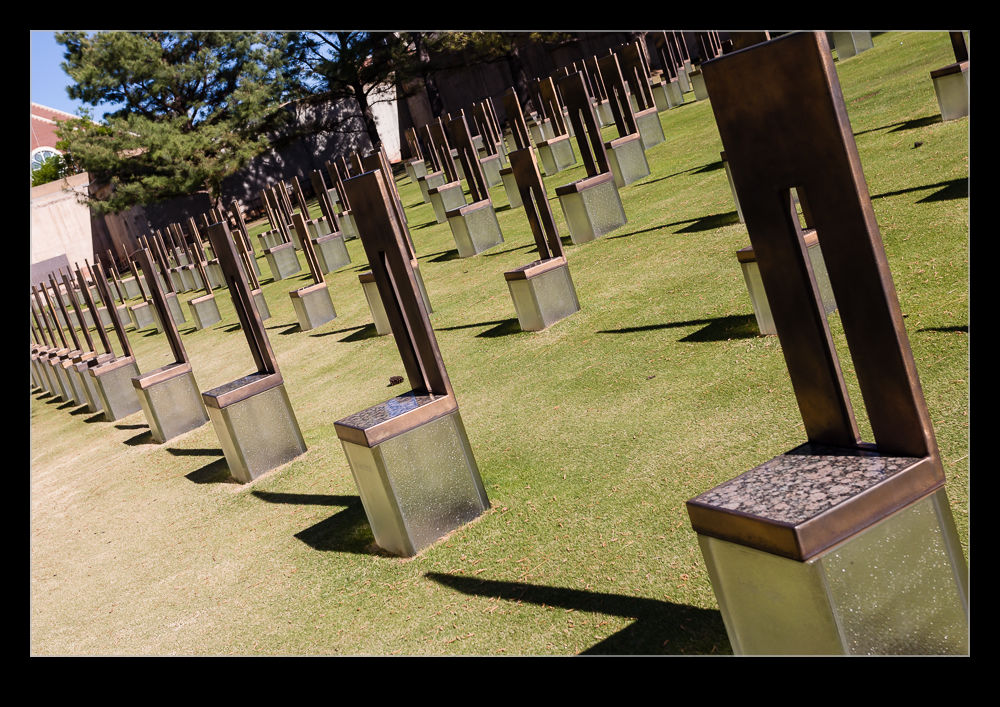 The footprint of the building is now a grassed area. Surrounded on three side by walls, part of which are the only remaining sections of the original building, the grass is filled with chairs. These chairs are made from bronze and glass and each represents a victim of the bombing. They are laid out in rows based on the floor that the victim was on at the time of the attack. There were many children killed as there was a daycare facility in the building and the chairs for the children are smaller. This has a very poignant effect. The front of each chair has the details of each victim. Apparently, at night the chairs are illuminated from within and I may have to go back when I am next there to see this.
The footprint of the building is now a grassed area. Surrounded on three side by walls, part of which are the only remaining sections of the original building, the grass is filled with chairs. These chairs are made from bronze and glass and each represents a victim of the bombing. They are laid out in rows based on the floor that the victim was on at the time of the attack. There were many children killed as there was a daycare facility in the building and the chairs for the children are smaller. This has a very poignant effect. The front of each chair has the details of each victim. Apparently, at night the chairs are illuminated from within and I may have to go back when I am next there to see this.
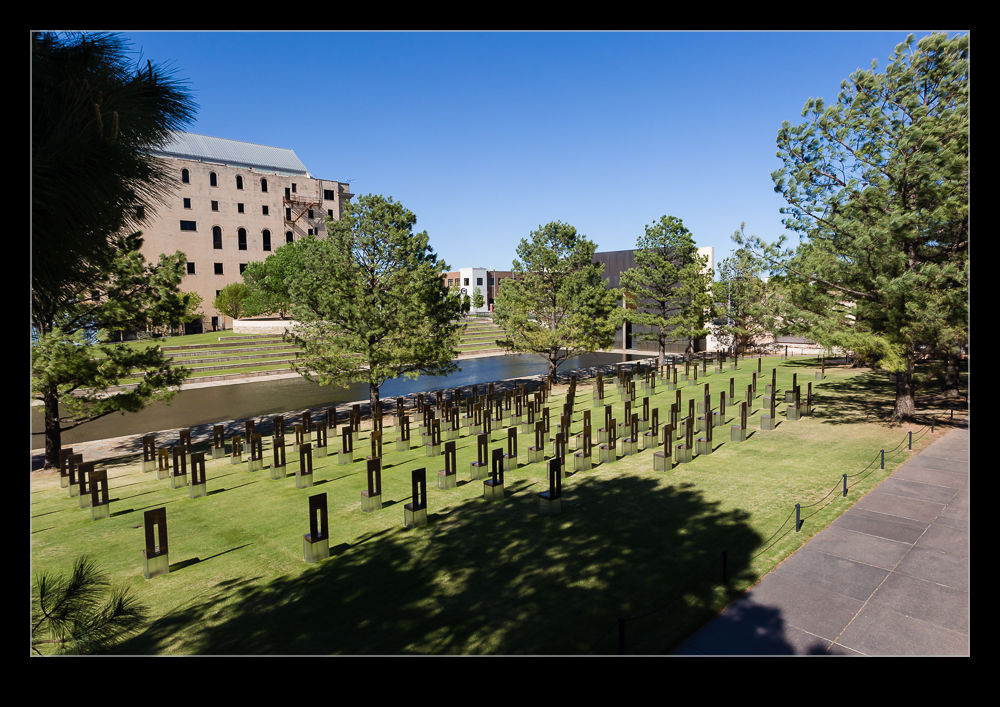 The street that used to run alongside the building and on which the bomb was placed has been closed. It has been leveled and a rectangular pond now is there. At each end are metal arches with two times on them. 9:01 represents the city before the bomb and 9:03 is the city after the bomb.
The street that used to run alongside the building and on which the bomb was placed has been closed. It has been leveled and a rectangular pond now is there. At each end are metal arches with two times on them. 9:01 represents the city before the bomb and 9:03 is the city after the bomb.
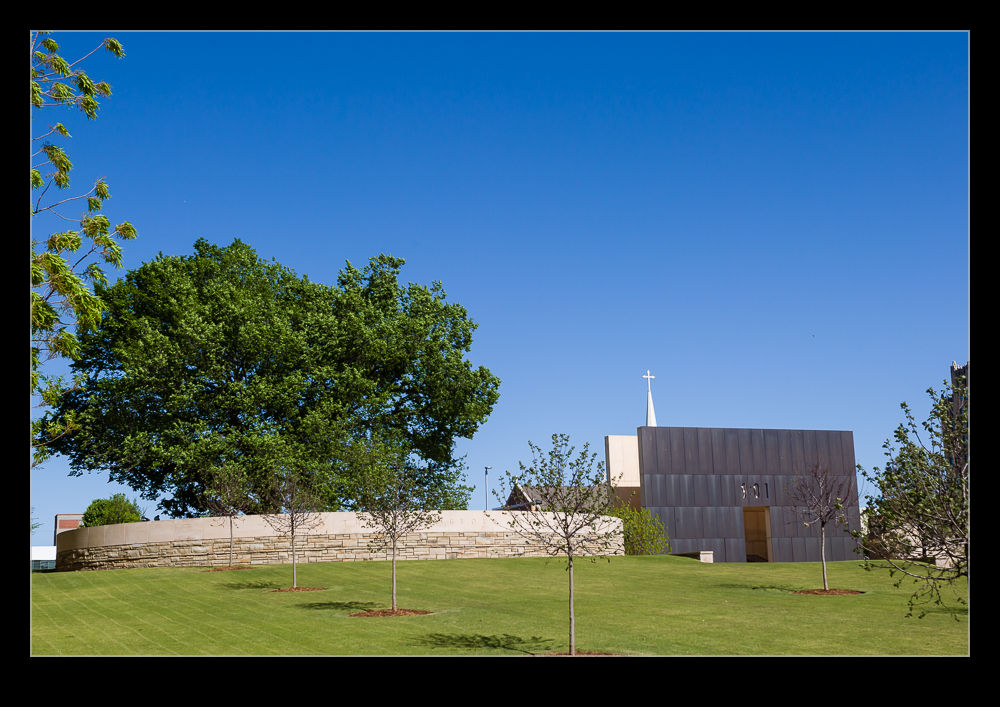 Across the water from the chairs are a couple of other features. One is a tree. Despite the damage inflicted on everything in the area, this tree survived and became a symbol of the city’s survival. Also, there is a building that previously held a newspaper but is now the museum associated with the memorial. It shows signs of damage sustained and there is graffiti from some of the original rescue workers.
Across the water from the chairs are a couple of other features. One is a tree. Despite the damage inflicted on everything in the area, this tree survived and became a symbol of the city’s survival. Also, there is a building that previously held a newspaper but is now the museum associated with the memorial. It shows signs of damage sustained and there is graffiti from some of the original rescue workers.
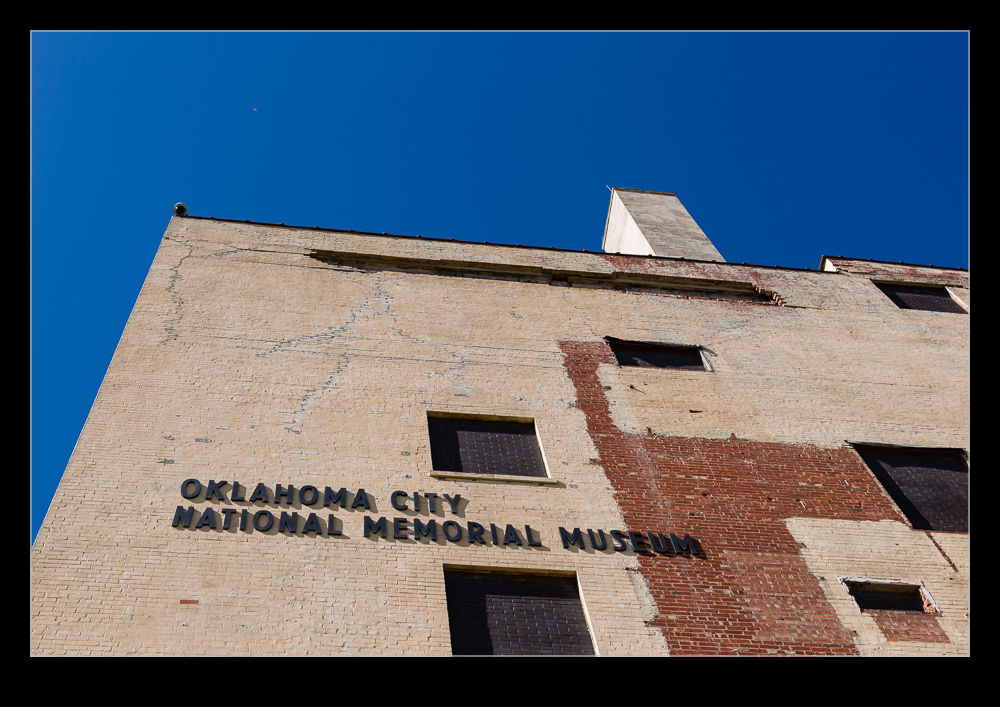 Like so many well thought out memorials, this one is very simple yet very effective. More recent events have led many to forget just how terrible an event this was. It was an example of just how much someone could take their personal point of view to an extreme at the expense of so many innocent people. Quite relevant when hearing some of the things people say these days. If you look at the fence with keepsakes and photos attached to it, it becomes a lot more apparent just how personal an attack like this is to those involved and a reminder why there is no justification for anything like it.
Like so many well thought out memorials, this one is very simple yet very effective. More recent events have led many to forget just how terrible an event this was. It was an example of just how much someone could take their personal point of view to an extreme at the expense of so many innocent people. Quite relevant when hearing some of the things people say these days. If you look at the fence with keepsakes and photos attached to it, it becomes a lot more apparent just how personal an attack like this is to those involved and a reminder why there is no justification for anything like it.
